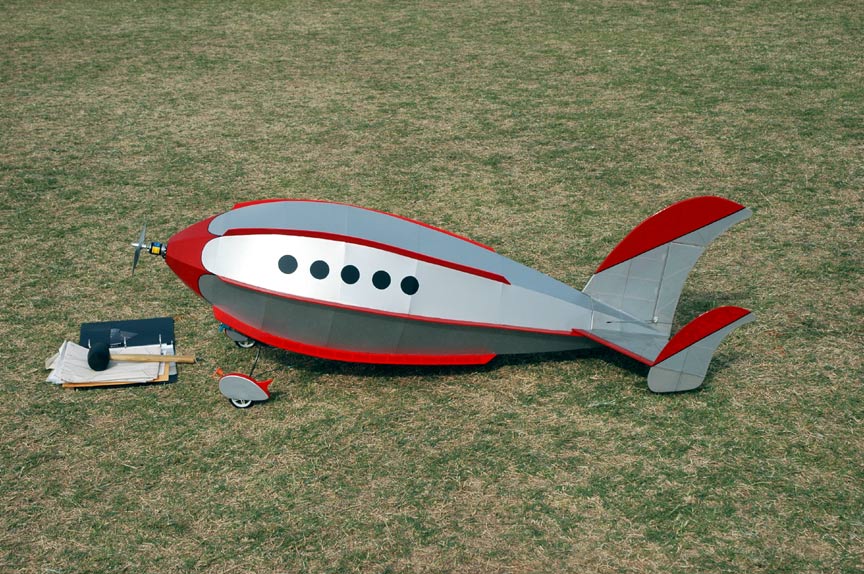Great information. From what I remember back in yesteryear and what I've seen from YouTube, those small rockets are quick. Do you know of one's that are slow, or can be slowed down?
The warlock piqued my interest because it's about the size of my youngest daughter. And it's obvious drag profile. Now, as a point of clarification, is it the rockets capacity for the larger motor, the weight, both of those, or actually using a high powered motor which requires a license?
If it's the weight, can I cut the weight down with carbon components to remove the legal requirement? Motorwise, I'd like the least powerful motor that'd get it into the air enough for the parachute to work properly.
You are looking for the Holy Grail of slow, dramatic liftoffs, like we see when full-sized rockets leave the pad for orbit. And so am I! Unfortunately, that’s not easy, or for the most part even possible, to achieve.
The main problem is that a rocket needs to get off the launch guide (rod or rail) at a minimum speed to be stable (around 45 feet per second), and a motor that burns for very long after clearing the guide tends to make the rocket pick up even more speed. The flights are going to look fast compared to full-sized space launch vehicles.
I mentioned using high-thrust, short-burn motors for low flights. That’s one way to keep things low. But the rocket goes off kind of like a mortar round and coasts most of the way with no more thrust.
And then there are rockets like saucers and spools that don’t look like traditional rockets. Those types of “rockets” have so much drag that they never get much speed, even under thrust. Those are fun. You can put a long burn motor in a saucer and watch it thrust all the way to burnout and it never gets going very fast or gets very high. It’s a great way to enjoy the thrust of a long-burn motor.
What you are looking for is probably the middle ground between a traditional rocket form factor and a saucer — something lightweight that can get off the pad at a safe speed, but has enough drag that it never gets going very fast, even under thrust. Generally, you are not going to find many kits like that. And achieving a flight like that is also typically as much about picking the right motor with the right thrust curve for the weight of the rocket you are flying as it is about designing the rocket. There’s some real rocket science to it.
I’ve made a few rockets with these kinds of goals in mind. The last one was made from pink foam insulation board. That one worked pretty well for flights similar to what you are looking for. That rocket was roughly the same height and diameter as a Warlock, but it was less than half as heavy. So it could fly on much smaller motors. And I was able to find motors for it with an initial thrust spike to get it off the pad at a safe speed, and a long, low-thrust sustain period so you could watch the rocket continue to thrust as it continued its flight. You don’t have to be a genius to make it work, but it helps to have some rocketry experience.
On your other questions about certifications and whether they are related to weight or motor class, the answers get complicated, because they involve rules from several government agencies, including the FAA and NFPA. Here are the main issues:
The first is the weight of the rocket. You can fly a rocket that weighs less than 1500 grams (3.3 pounds) without FAA permission. Same for a motor under 125 grams of propellant. Over those weight limits, you need an FAA waiver. This is why people fly high-power rockets almost exclusively with clubs — clubs handle the FAA waiver.
The second set of issues has to do with the thrust and overall impulse of the motor. You can fly a motor with average thrust of under 80 Newtons and total impulse of under 160 Newton-seconds (G motor or lower) without a Level 1 high power certification. Above that, you need a certification to purchase and fly those larger motors.
To keep it simple, if you want to fly rockets on your own with no FAA waiver and no certification, your rocket must be under 3.3 pounds, and the motor needs to be a G80 or lower. The Warlock is going to be over twice as heavy as that, and will definitely need at least an H motor and thrust more than double 80 Newtons. There’s no way you are going to be able to modify a Warlock kit to get under those limits.
I in no way want to discourage you, but you are leaping into advanced rocketry topics in my opinion. For getting started, if you want some large rockets that will be fun and can keep relatively low, I’d look for lightweight kits in the 2.5” to 3” diameter that you can fly on D, E or F motors. I haven’t really kept up with what’s available in those types of rockets lately, but there must be some good options.






